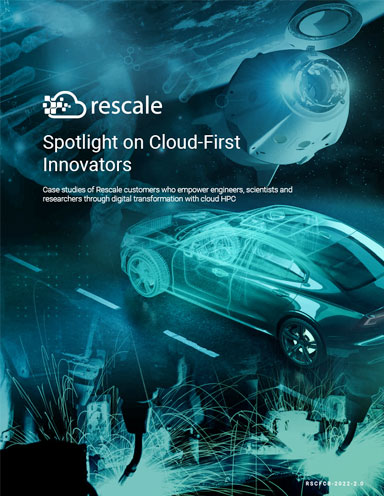Rescale Announces Boom Supersonic Partnership, Project Vahana Collaboration
Latest News
June 19, 2017
Rescale announces A³ and its Project Vahana as a groundbreaking new customer. Project Vahana aims to introduce an autonomous, pilotless aircraft, according to Rescale.
During the design phase of this vertical takeoff and landing (VTOL) aircraft, designers are looking for sci-fi inspired shapes, structural engineers are concerned with weight, and aerodynamicists want sleek, high-performance flight surfaces, Rescale explains. By facilitating on-demand simulation software and fast, scalable big compute resources, Rescale has enabled A³ to create a huge number of virtual prototypes to cover the design space. A³ has been able to run thousands of simulations to achieve the optimal design, all achieved with a minimal in-house IT footprint, according to Rescale.
“Vahana, an A³ project, is bringing the future of personal transportation to life. Rescale’s scalable computing resources enable rapid analysis of complex aerodynamics,” says Zach Lovering, Vahana project executive. “To reduce the technical risks of our project with high-fidelity predictive software requires immense computational resources. Rescale offers us a turnkey solution to connect our software tools to high-performance hardware.”
In other news, Boom Supersonic is strengthening its strategic partnership with Rescale to leverage cloud high-performance computing (HPC) for design and optimization of its new supersonic passenger jet, the companies report.
Boom showed off its updated XB-1 supersonic demonstrator at the recent 2017 Paris Air Show. Leveraging Rescale’s turnkey cloud HPC platform, Boom uses computational fluid dynamics (CFD) and finite element analysis running on a massively-powerful compute infrastructure to run thousands of simulations at each stage of the design. This on-demand, zero-IT footprint has enabled them to run a lean startup operation, while simulating and optimizing high-fidelity virtual prototype models on powerful compute clusters, the companies report.
Boom’s product development cycle is almost entirely simulation-driven, employing the Rescale platform from initial high-level concept down to the detailed design of items such as the variable geometry engine intakes. Using flight simulators, pilots are testing various flight conditions and helping to refine requirements in a continuous loop with simulation. The approach is leading to a huge amount of data being generated across several complex simulation tools, but by working with the Rescale development team Boom is helping Rescale develop efficient data management workflows. For example, remote desktop post-processing with automatic in-platform visualization of results across multiple tools ensures that all stakeholders stay fully informed at every stage, transferring only the key results they need to move the project forward.
“Rescale’s cloud HPC platform lets us be simulation-driven throughout the product design phase. It lets our team quickly disseminate simulation results to all the stakeholders in the process, so that we can make rapid progress,” says Joshua Krall, co-founder and CTO of Boom.
Using their recent $33M Series A round of funding, Boom is building its XB-1 demonstrator aircraft currently.
For more info, visit Boom Supersonic and Rescale.
Sources: Press materials received from the company.
Subscribe to our FREE magazine, FREE email newsletters or both!
Latest News






